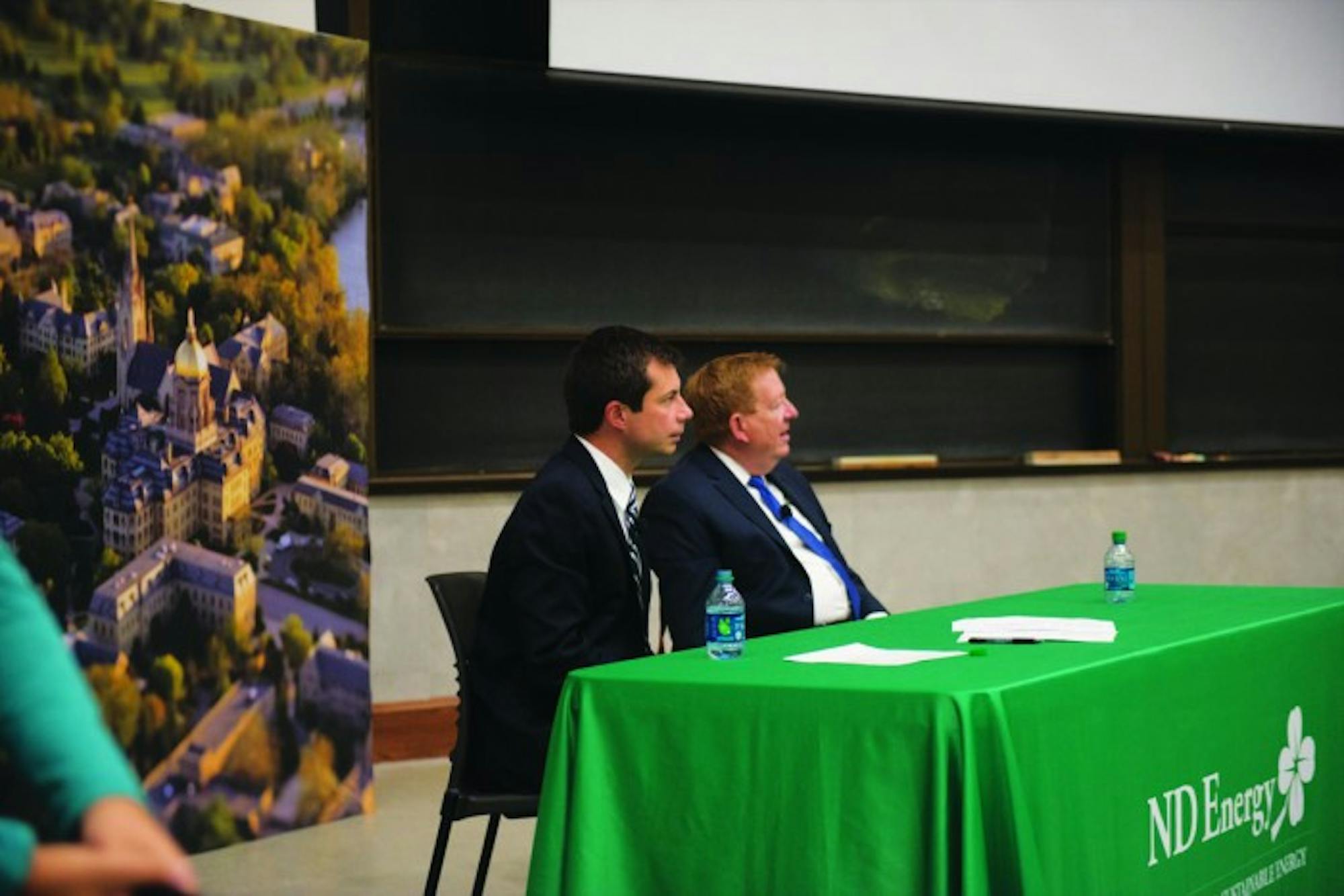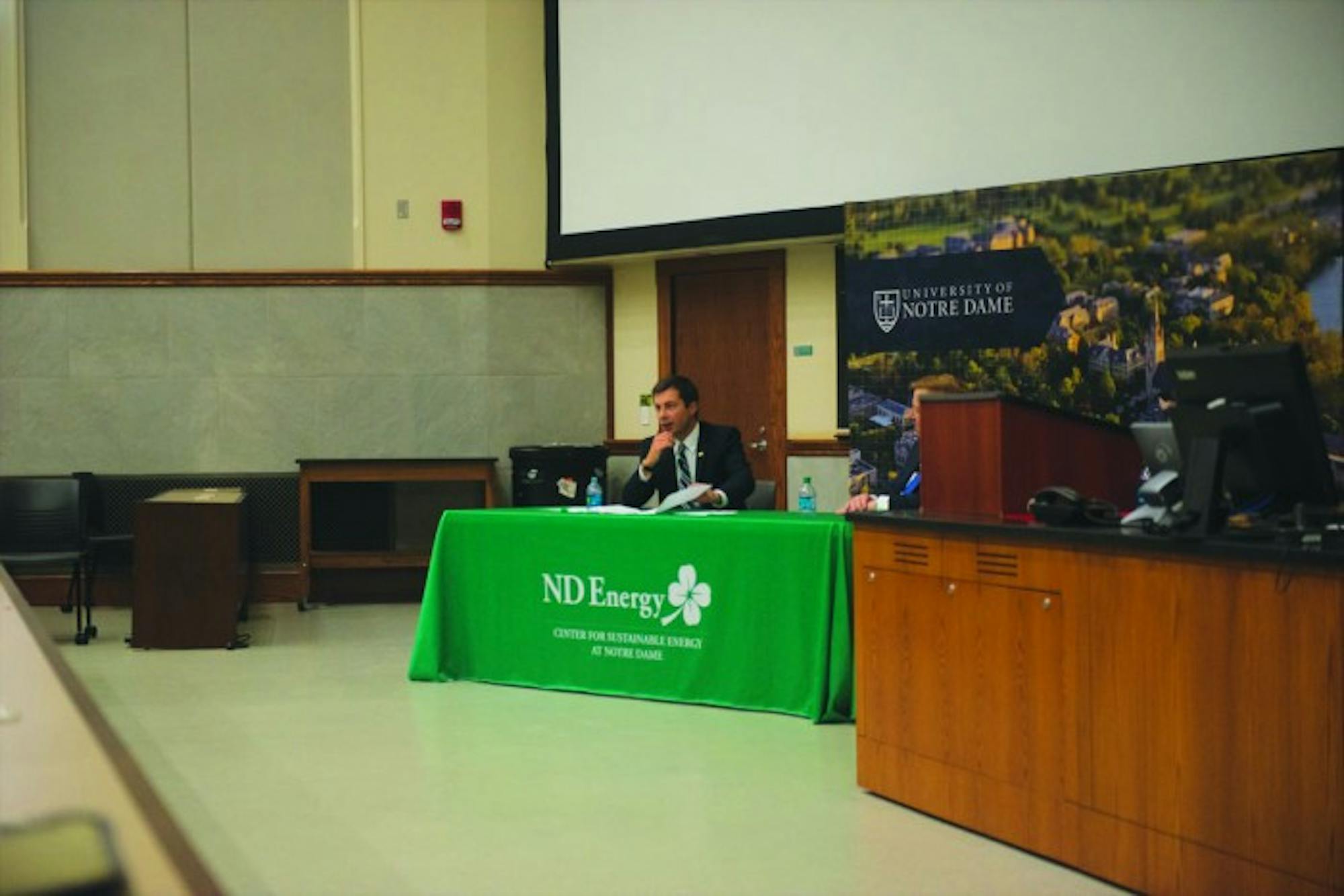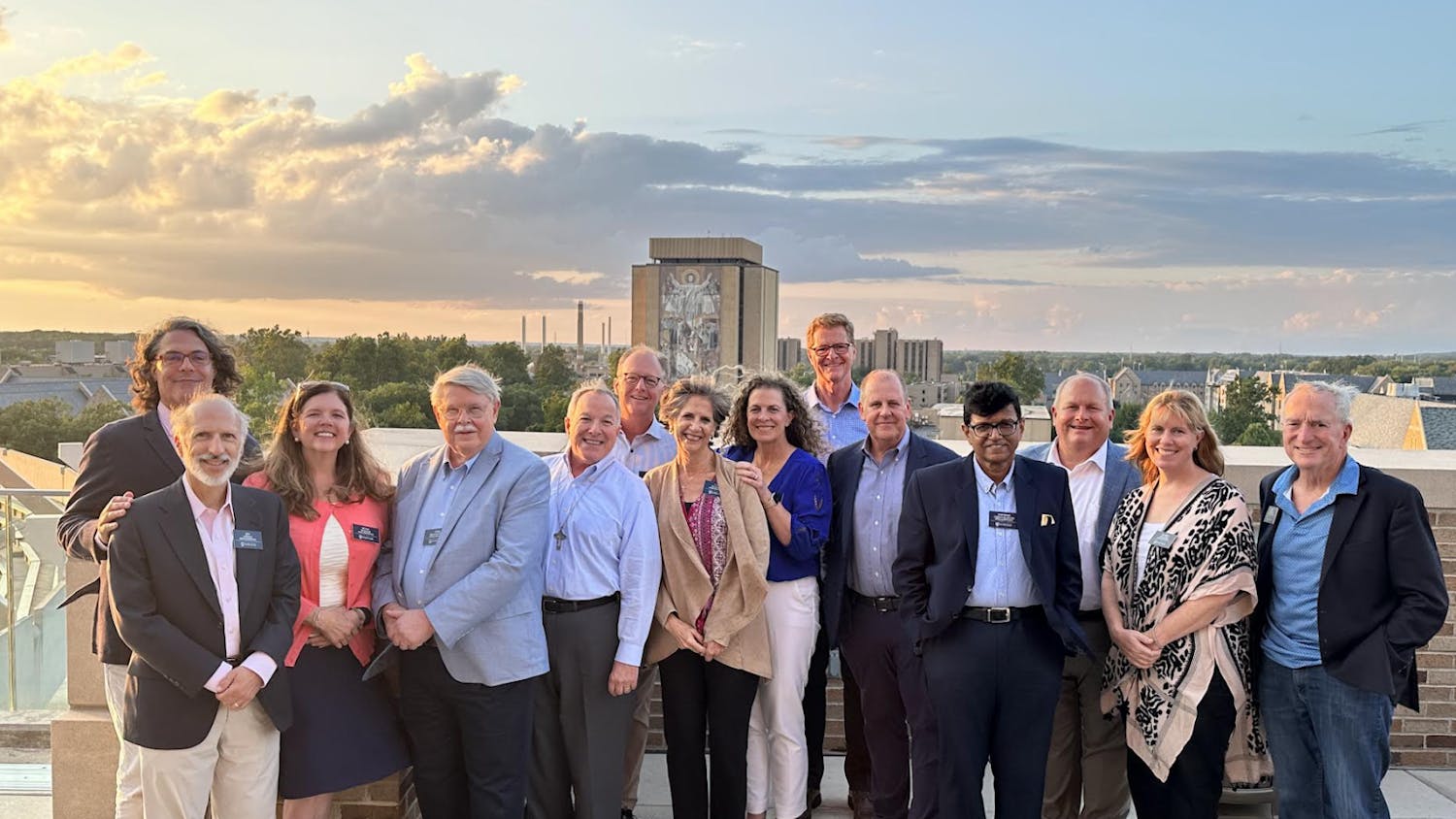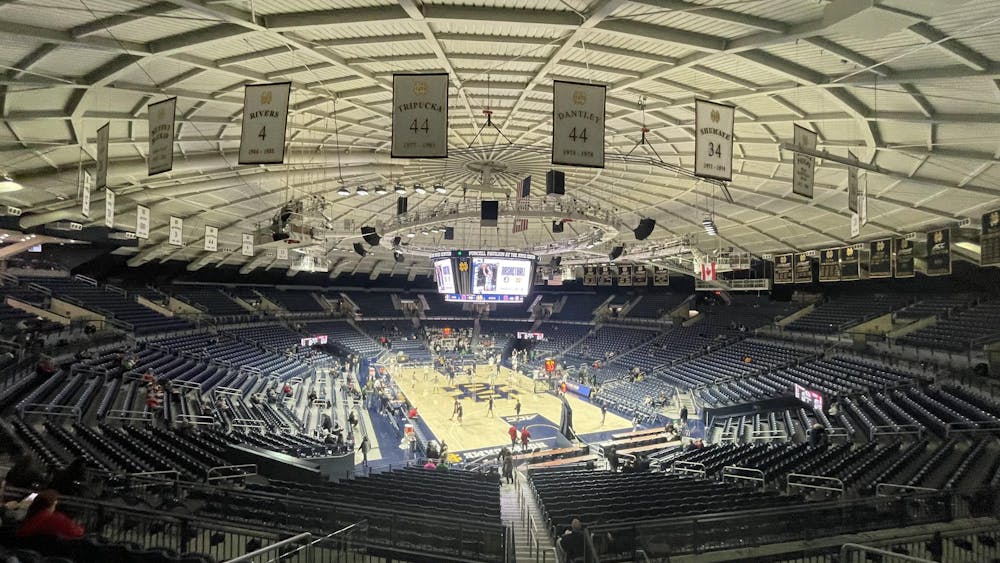The University hosted Mayor James Brainard of Carmel, Indiana, and South Bend Mayor Pete Buttigieg on Thursday for a discussion of urban development and sustainability entitled “Designing Smart Cities: Mayors Taking Action.”
While campaigning for mayor of Carmel, Brainard went door-to-door to meet with voters. He said the city did not have a clearly defined main street, and many residents debated the location of the city’s downtown area.
“Carmel is a poor, Quaker farming community that had, at the end of World War II, only about 200 families — 500-some people,” he said. “Then, it started to grow, much like cities across the United States did that are on the edge of major metropolitan areas. But it grew as a car suburb.
“It didn’t have really much of a downtown other than that little two blocks, and you couldn’t walk anywhere you needed to go. And some of the older neighborhoods didn’t even have sidewalks.”
Brainard said he set out to develop a downtown area in Carmel and make the area more accessible to pedestrians and bikers. The town now has roughly 200 miles of bike trails, Brainard said, and almost all of its neighborhoods are connected.
“More than anything, I kept hearing about a center — about being able to walk somewhere I needed to go, about being able to go out for a dinner and a show and not have to drive 40 minutes into downtown Indianapolis,” he said. “What it was was a yearning for a very traditional city — the same kind our civilizations have been building for thousands of years.”
When developing Carmel’s downtown area, the city decided to put a height limit on buildings — restricting them to five stories, Brainard said. The effects of tall buildings are similar to the effects of urban sprawl, he said, and cause problems for both the environment and public health.
“In addition to the environment, [sprawl] was bad for mental and physical health. People were separated from each other,” he said. “We’re social animals. But if you go up too high, you get the same mental and physical health impact.”
The city has implemented other sustainable measures, Brainard said. The city uses the end product from its sewage plants and the methane flames utilized in sewage plants to create fertilizer, he said.
“It used to just produce carbon, [and] you had to burn it off for safety,” Brainard said. “We’re using it now to heat up that sludge to turn it into fertilizer, and we sell it. It went from being an expense to a profit for us.”
Cities have the power to affect wide-reaching environmental change, Buttigieg said, though their efforts are sometimes hindered by state and federal governments.
“I think we’re finally beginning to realize that there’s more to government than the tension between state and federal [government],” he said. “And for a long time, we were led to believe that the tug-of-war between state and federal power was the only one that mattered, when actually, it increasingly feels like we’re in an environment where it’s really cities and towns against the world.”
Buttigieg said it is important to ensure that local autonomy is protected, as higher levels of the government have begun to interfere with communities’ decision-making.
“It’s certainly the case that cities are having their hands tied often by state governments over ideological reasons or power reasons,” he said. “And for the first time, we seem to see the federal government begin to want to move in the same direction.”
Cities have begun to form coalitions to combat climate change and bring about change from the local level, Buttigieg said.
“If a critical mass of cities agree to take certain steps — whether it’s embracing the climate goals, moving toward carbon neutrality, getting a certain base of renewables, whatever those goals are — when us cities do it, that’s almost as good as if the entire world and national governments had come together and they make a decision,” he said.
Buttigieg said the Smart Streets initiative — a project which created new two-way traffic lanes in the community — and the introduction of the LimeBikes into South Bend made the city more connected.
“We’re now at 15,000 trips per week on this system,” he said of the LimeBikes. “In a city the size of South Bend, it’s extraordinary. We’ve seen a six-fold growth just from the first month to the second month, and we’re getting about a thousand riders per day.”
Notre Dame students aren’t the only people using the bike sharing system, Buttigieg said.
“A lot of the riders are actually from low-income parts of town where people may rely on this as a way to get to work,” he said. “And so the idea of bikes and bike lanes and bike sharing systems [as] something that’s just for affluent corners of the community really doesn’t bear out when you look at who uses them and how.”
Buttigieg echoed Brainard’s comments and said it was important for cities to be well-connected and accessible to pedestrians.
“The very mission, the function of a city — which is exchange — is usually best supported when people can encounter each other, which means being outside of a vehicle,” Buttigieg said.
When it comes to local community development, Buttigieg said, partisan politics do not have as much of an influence as they do in national affairs.
“When it comes to this local problem solving, even on what might be considered a national or global issue, often party doesn’t matter as much as you would think,” he said. “And a lot of that, I think, is because we’re in the business of solving problems in a very immediate level. We’re looking for solutions at a very immediate level.”













